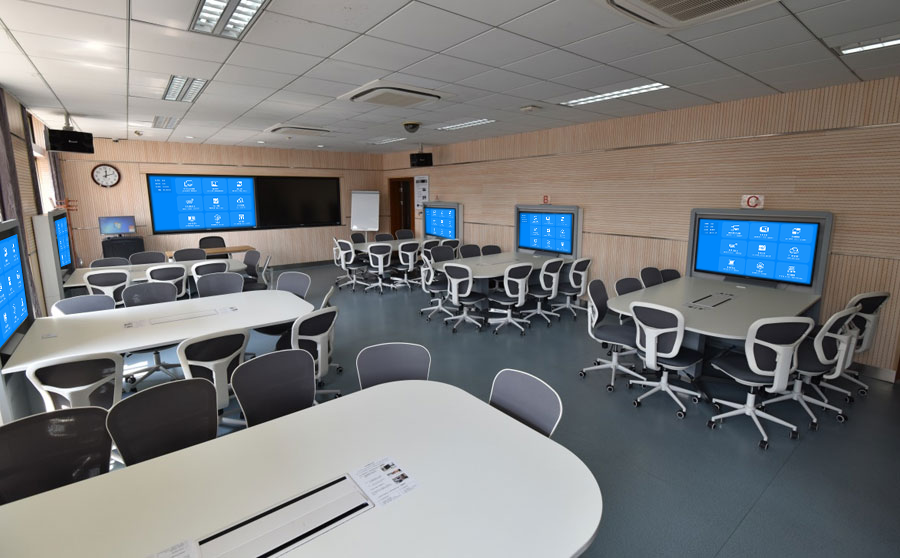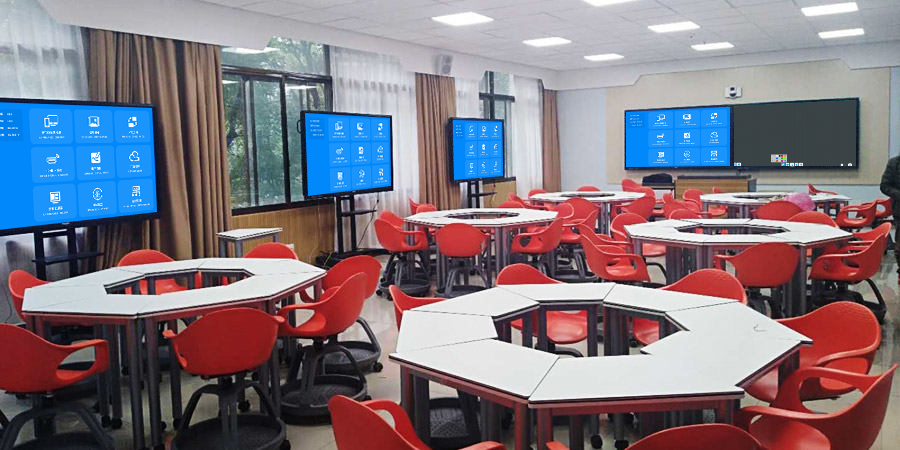Multi-Screen Interaction and Phone Screen Mirroring: An All-Scenario Cross-Screen Solution
The integration of multi-screen interaction with phone screen mirroring, supported by Bijie’s mirroring devices, turns a phone into a “mobile node” in a multi-screen network. This allows content to flow flexibly across multiple terminals, covering scenarios like office, education, and display.
Fast Integration, Phones Link Multiple Screens
Bijie’s mirroring devices serve as a central hub for integration. Whether a phone is an iOS or Android system, it can connect to a multi-screen system in 3 seconds using methods like a QR code scan or NFC tap-to-connect. Even older phones can maintain a stable connection, with a success rate of over 99.6%.
Content can flow in both directions. Content from a phone can be mirrored to a main screen or a split screen with a single click. At the same time, mirrored content from other devices in the multi-screen network can be synchronized to the phone, maintaining 1080P high-definition quality with an audio-visual synchronization delay of ≤20ms.
Functional Linkage, More Flexible Collaboration
It supports “phone control of screens,” allowing you to switch content on the main screen, adjust the split-screen layout, and even annotate content on multiple screens. The annotations are synchronized to the connected screens in real time.
It also enables “content-diverted mirroring.” A phone can mirror the same content to different screens or different content to specific screens, adapting to needs like group teaching and targeted commercial displays.
Practical Value for Multi-Scenario Implementation
Office Meetings Phone mirroring can be quickly integrated into a multi-screen environment, allowing temporary content and proposals to be compared in a split-screen view. Remote attendees can join via their phones, and their comments can be mirrored to a dedicated split screen, increasing decision-making efficiency by 40%.
Classroom Teaching A teacher can use their phone to mirror students’ homework to a group’s split screen, and a model answer can be mirrored to the main screen for explanation. Students can mirror their experiment designs, and after the teacher annotates them, they are synchronized back to the students’ phones. This increases classroom participation by 35%.
Commercial Displays Salespeople can use their phones to mirror a product video to a main screen and its parameters to a touch screen, increasing response speed by 50%. The store’s phone can control the content on each screen, flexibly switching promotional information, which increases customer dwell time by 30%.
The integration of these two technologies turns a phone into a “flexible hub” for multi-screen networks. Content flows on demand, and cross-screen collaboration is initiated instantly, upgrading the form of multi-screen interaction.